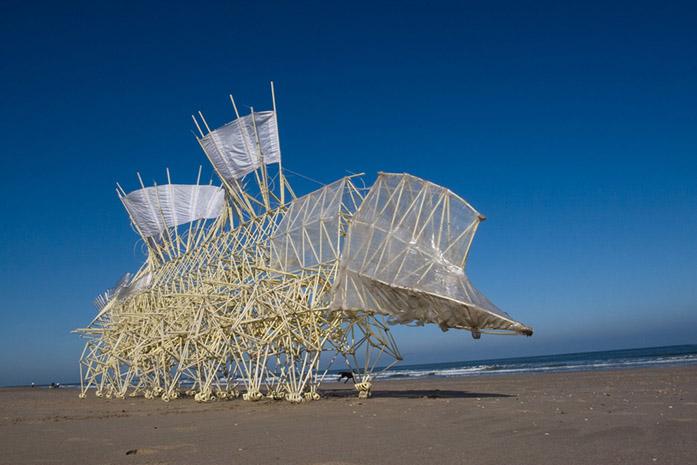On Tuesday night, one of the world’s most creative minds graced the University of Iowa campus. If you haven’t heard of Theo Jansen yet, it is about time that you do.
Jansen is a Dutch kinetic artist whose life’s work has been to push the ever-thinning boundaries between the arts and sciences.
“The walls between art and engineering exist only in our minds,” Jansen proclaimed as his thesis in a 2010 BMW Commercial.
Since 1990, Jansen has worked on what he believes to be the culmination of this vision of total synthesis by creating what he calls “strandbeests”: large animatrons constructed off PVC piping and equipped with a simple artificial intelligence to give them autonomy. The “beests” are essentially giant wind-walkers that use a combination of wing-like sails, recycled plastic bottles, and a PVC exoskeleton complete with carefully constructed limbs to come to “life.”
The “beests” — which Jansen consistently emphasized aren’t machines but rather real animals that he even goes so far as to give scientific names to: Animaris Percipiere, for example — spent their “infancy” on the beaches of his native country of the Netherlands but have since migrated to beaches across the globe, including ones in Miami and Boston for recent exhibitions.
The terms “born,” “live,” “infancy,” and “migrate” all suggest actual life and true intelligence, and they are key to Jansen’s vision. In some senses, the speculation that Jansen is playing God — creating truly new life forms from everyday materials and watching them grow into spectacular, towering beings — is not wrong. While the “strandbeests” don’t have a genetic code or many of the other traits characteristic of life, they move, breathe, and think.
The capability of thought and adaptability is what, among many other things, makes the beests so impressive. Because they live and roam on beaches, it is common for them to come into contact with water, Jansen said. Problematic, given their framework would fall apart if exposed to the tumultuous movement of the oceans.
To combat this, he ingeniously added a valve to the beests that uses a high-pressure air pump to constantly “breathe” in the air immediately around it. If the beest begins to wander into the ocean, this valve will suck up the water, preventing the flow of air through the pump and consequently triggering a set of mechanisms that causes the beest to move its legs as fast as possible and run away.
Another problem Jansen said he has often encountered with the beests is that they aren’t very heavy and will blow away in a storm. To prevent this, he has developed a beest he has modeled after an elephant, complete with a trunk-like mechanism that fills with sand to weigh itself down when it encounters blustery conditions.










